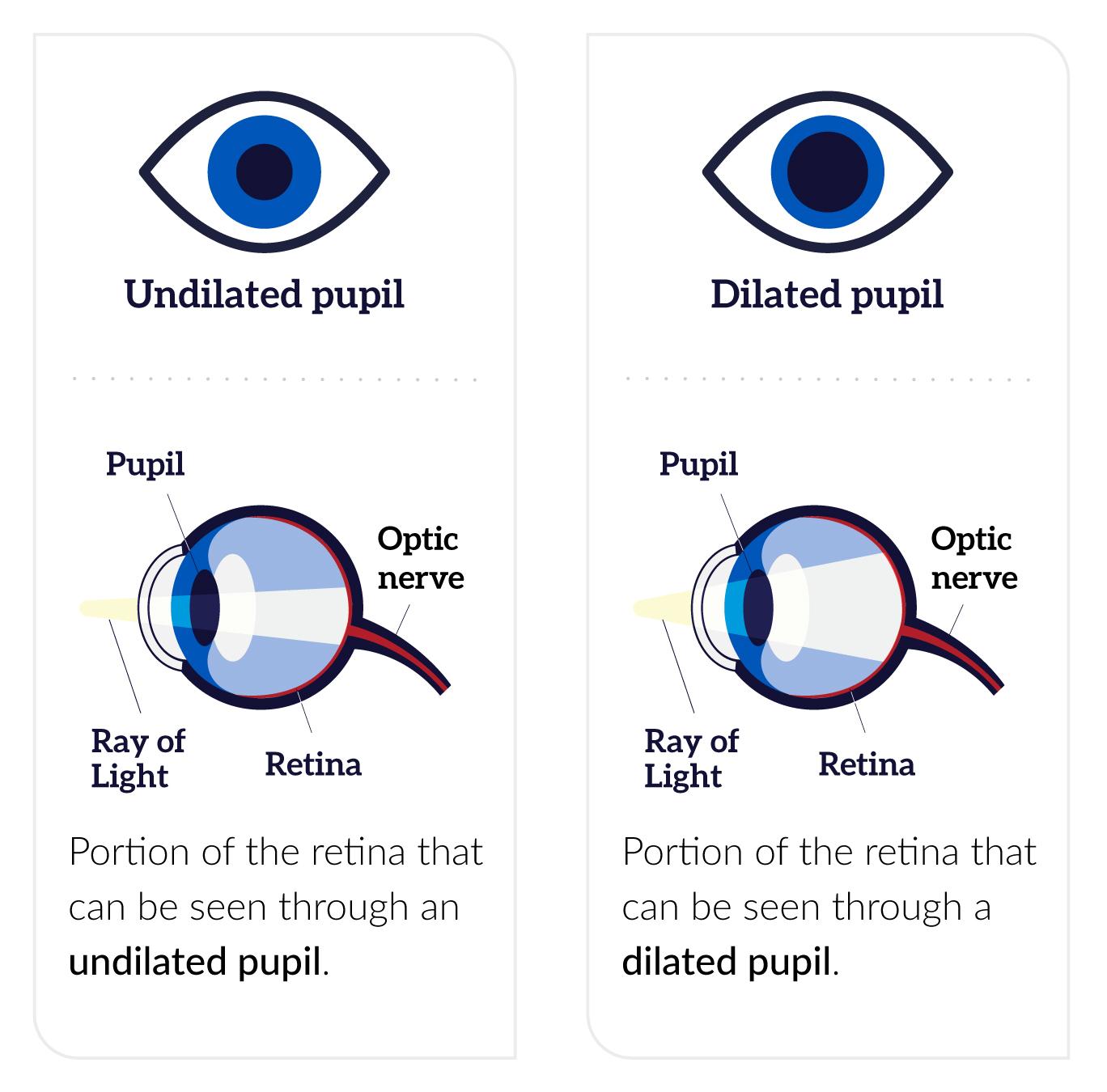What is a dilated eye exam?
A dilated eye exam is the best thing you can do for your eye health! It’s the only way to check for eye diseases early on, when they’re easier to treat — and before they cause vision loss.
The exam is simple and painless. Your eye doctor will check for vision problems that make it hard to see clearly, like being nearsighted or farsighted. Then your doctor will give you some eye drops to dilate (widen) your pupil and check for eye diseases.
Since many eye diseases have no symptoms or warning signs, you could have a problem and not know it. Even if you think your eyes are healthy, getting a dilated eye exam is the only way to know for sure.
How often do I need to get a dilated eye exam?
How often you need a dilated eye exam depends on your risk for eye disease. Talk to your doctor about what’s right for you.
Get a dilated eye exam every 1 to 2 years if you:
- Are over age 60
- Are African American and over age 40
- Have a family history of glaucoma
If you have diabetes or high blood pressure, ask your doctor how often you need an exam. Most people with diabetes or high blood pressure need to get a dilated eye exam at least once a year.
What happens during a dilated eye exam?
The exam includes:
- A visual acuity test to check how clearly you see. Your doctor will ask you to read letters that are up close and far away.
- A visual field test to check your peripheral (side) vision. Your doctor will test how well you can see objects off to the sides of your vision without moving your eyes.
- An eye muscle function test to check for problems with the muscles around your eyeballs. Your doctor will move an object around and ask you to follow it with your eyes.
- A pupil response test to check how light enters your eyes. Your doctor will shine a small flashlight into your eyes and check how your pupils react to the light.
- A tonometry test to measure the pressure in your eyes. Your doctor will use a machine to blow a quick puff of air onto your eye, or gently touch your eye with a special tool. Don’t worry — it doesn’t hurt!
- Dilation to check for problems with the inner parts of your eye. Your doctor will give you some eye drops to dilate (widen) your pupil. This helps the doctor see inside your eye.
Depending on your needs, your doctor may include other tests too. Ask your doctor if you have questions.
How does dilation work?
Dilating your pupil lets more light into your eye — just like opening a door lets light into a dark room. Dilation helps your eye doctor check for many common eye problems, including diabetic retinopathy, glaucoma, and age-related macular degeneration (AMD).

What happens after a dilated eye exam?
For a few hours after a dilated eye exam, your vision may be blurry and you may be sensitive to light. Ask a friend or family member to drive you home from your appointment.
If your eye doctor finds refractive errors in your vision, you may get a prescription for eyeglasses or contact lenses to help you see more clearly.

Bring your sunglasses!
Your eyes may be sensitive to light for a few hours after your exam. Sunglasses can help, so bring them if you have them! Your eye doctor may also have disposable sunglasses they can give you.
If your eye doctor finds signs of an eye disease, you can talk about treatment options and decide what’s right for you. Learn more about these common eye diseases:
If you’re seeing clearly and there are no signs of eye disease, you’re all set until your next exam. Make an appointment for your next dilated eye exam before you leave the office — that way, you won’t forget!

Dilated eye exam resources

Healthy Aging Month
Getting older doesn’t have to mean losing your vision. While some vision changes are a normal part of getting older, vision loss related to eye diseases and conditions can be prevented. Learn how healthy eye habits, like getting a regular dilated eye exam, can help keep your sight strong for years to come.